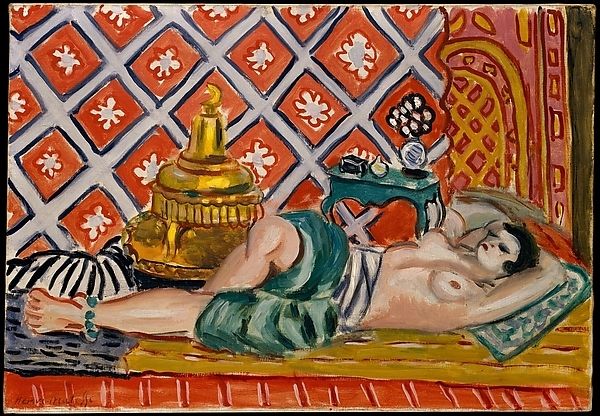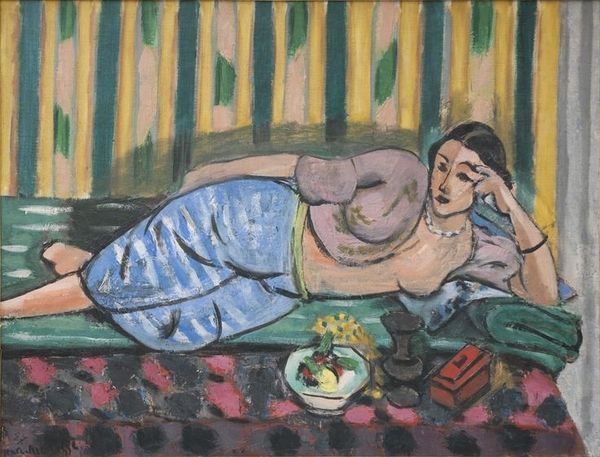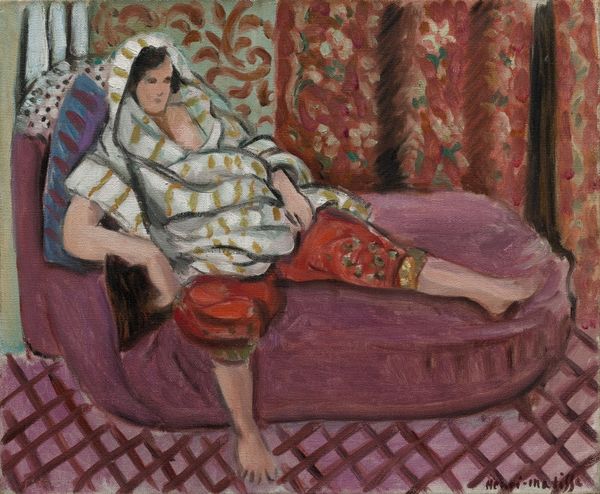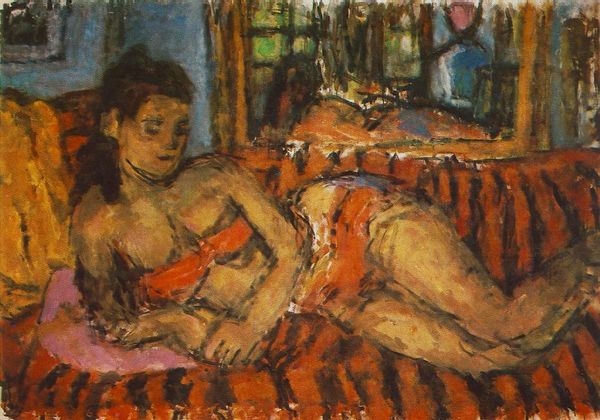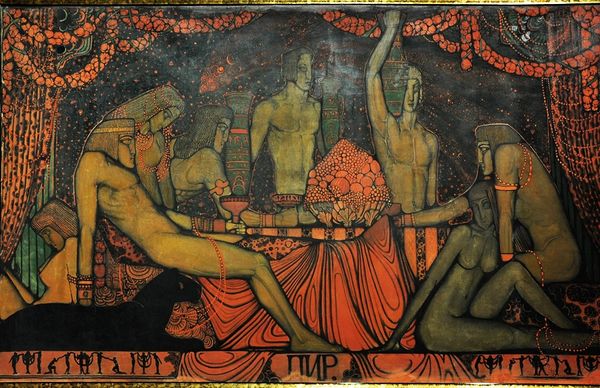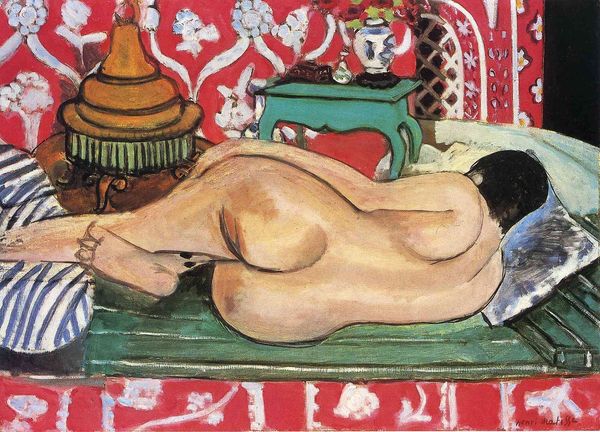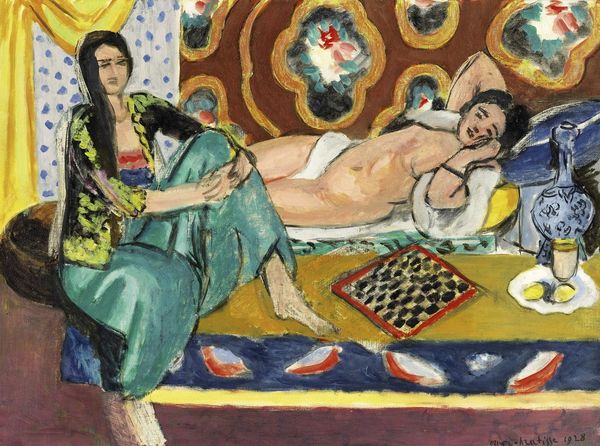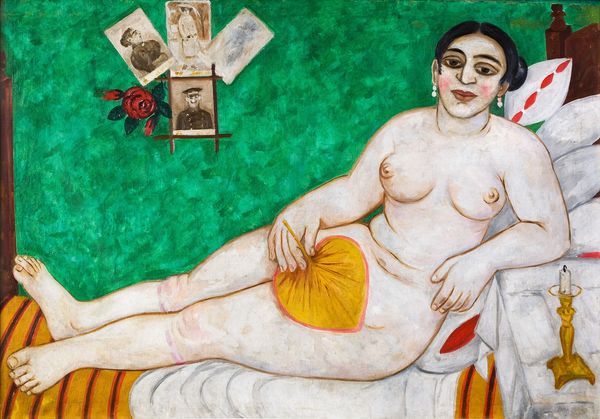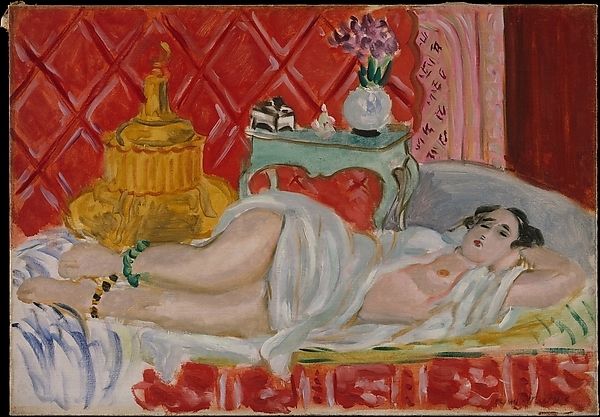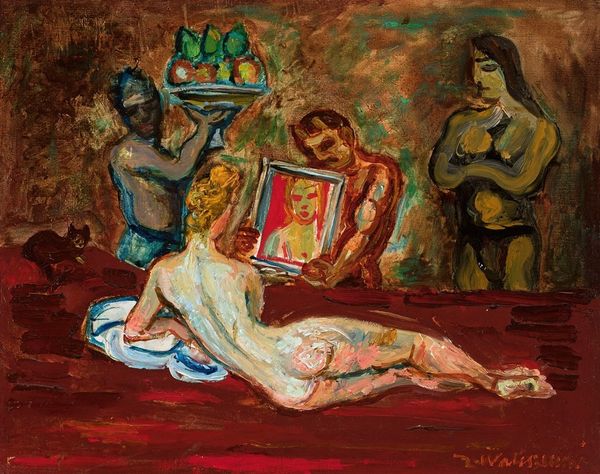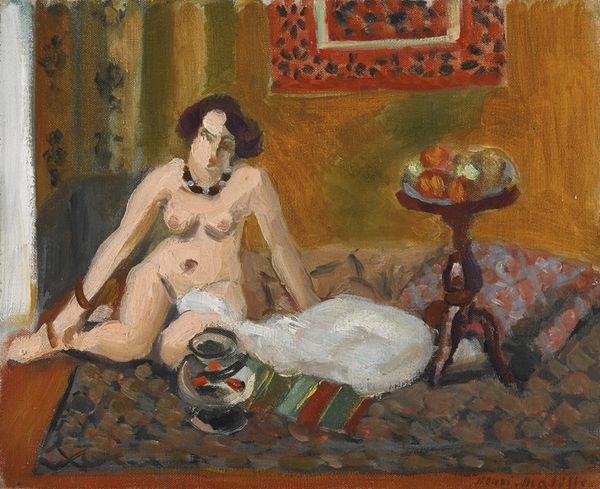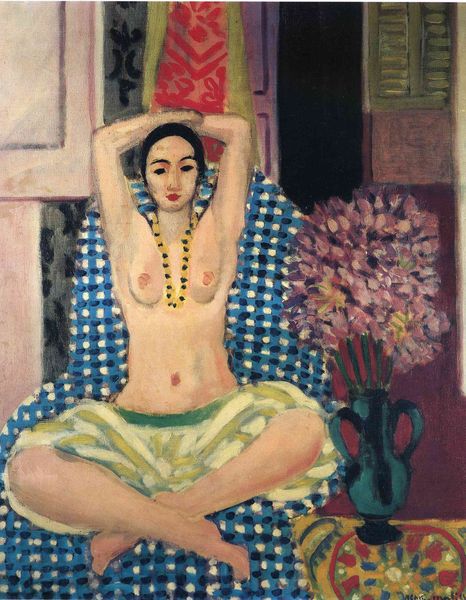
Copyright: Henri Matisse,Fair Use
Curator: Matisse’s “Odalisque with Gray Trousers,” painted in 1927. I always find it so interesting how the figure fits within a longer engagement with the Orientalist fantasy, popular amongst French artists in that period. Editor: The initial effect is strikingly opulent, with those pulsating reds and yellows playing against the cool grays of her trousers. The spatial compression is also rather curious; we’re never quite sure where one patterned surface ends and another begins. Curator: Indeed. The odalisque as a subject had a long history – think back to Ingres and Delacroix. But here, Matisse is moving away from earlier visions that emphasized a submissive, exoticized sexuality. His odalisques are self-possessed. Editor: That's fascinating. You can really sense Matisse pushing and pulling against the picture plane. The brushstrokes feel quite visible, almost liberated. How does this fit within his larger body of work? Curator: It exemplifies his Nice period in the 1920s when he turned increasingly to domestic, intimate scenes, responding both to local models and the global impact of colonialism and slavery. There's a clear dialogue with the socio-political power relations inherent in the subject matter, too. These women aren’t merely objects. Editor: Agreed. It challenges traditional perspective. The colors alone almost feel tactile; the fabric appears palpable. But isn't there something subversive, perhaps even confrontational, in its seemingly straightforward approach to line and color? Curator: Absolutely. Despite its decorative quality, it forces viewers to contemplate their own positions relative to issues of power, sexuality, and representation. These domestic interiors and female figures exist within larger questions of societal structures. Editor: Yes, there is something undeniably inviting. After all, he paints not just an object, but a figure who inhabits a constructed space of privilege. Overall, an impressive, rather cunning negotiation of tradition. Curator: An appropriate reflection regarding his interest in representing interiority and societal structures.
Comments
No comments
Be the first to comment and join the conversation on the ultimate creative platform.
